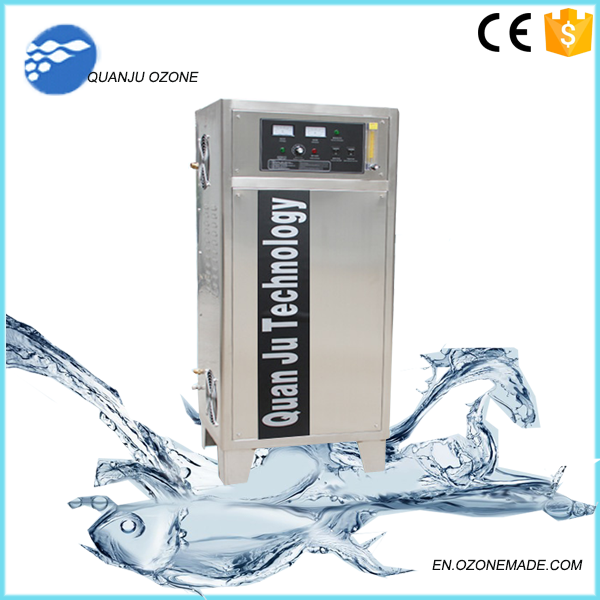Ozone Treatment for Bottled Water
2017-12-28

The ozone treatment enhances the water quality of most drinking water in general. However, it is a key and essential treatment for the production of safe, high quality, good tasting, aesthetically pleasing and storage stable bottled water that the consumers have come to expect. Ozone treatment is the most frequently used disinfection process in water bottling today.
With the application of a single ozone treatment step, the water bottler can disinfect the water, the bottling equipment, the bottle, the air above the water and the sealed cap of the bottle, thereby provide a most effective barrier to microbiological contamination for the protection and benefit of the consumer. These are the reasons why most water bottlers rely on ozone treatment to provide a safe, good tasting, aesthetically pleasing and storage stable product. As the ozone treatment became a well accepted, routine part of the water bottling process, many of its other benefits beyond the disinfection have become taken for granted and nearly forgotten. Some water bottlers may not even realize today that the use of ozone also provides benefits, such as, improved taste, elimination of odor, and long 2 years storage stability. These benefits have improved their product substantially making it a good tasting and safe. These are the product quality features that the costumers have grown to expect and enjoy.
The ozone is added to the water in an ozone contactor just prior to the bottling of the water. The ozone contacting system serves two primary functions (2).
Firstly, it is used for the dissolution or mass transfer of the ozone gas from the output gas mixture stream of the ozone generator into the water to be treated. A sufficient amount of ozone must be dissolved in the water to achieve the disinfection of the water and to provide dissolved ozone residual in the water necessary for the disinfection of the bottling equipment, the bottle and the cap of the sealed bottled water. In addition, dissolved ozone must be provided for the chemical oxidation of any undesirable organic or inorganic contaminants present in the water, such as, odorous materials, iron,manganese etc. The balance of the ozone remaining in the off-gas from the ozone contactor is destroyed by passing it through an ozone decomposer unit so that the off gas discharged into the atmosphere contains an ozone concentration less than 0.1 parts per million by volume (ppm v.) – or 2 x 10 -4 milligrams per liter (mg/l). For the optimum treatment of the water and for minimum bromate formation, the addition of the ozone should be controlled automatically using ozone monitors and process control instrumentation. Such a treatment system should assure a sufficient dissolved ozone concentration for the treatment, but prevent an excessive amount of ozone that could facilitate by-product formation. Thus, for high quality bottled water, the addition of ozone should be carefully controlled and monitored.
Secondly, the ozone contactor is a reactor. It provides the sufficient reaction time (detention or contact time) to allow the desired disinfection and/or oxidation processes to occur in the water. The reaction time is an important parameter for all three ozone reactions encountered in water bottling: disinfection, oxidation and decomposition as discussed in detail further below. Therefore, the size or volume of the ozone contactor should be designed based on water flow, water quality, and reaction time requirements. It might be necessary for certain source waters and for some water bottling plants, that these requirements be determined experimentally by pilot plant or laboratory testing.
The other factors that influence the ozone demand and overall ozone treatment include: temperature, pH, filler design, operating procedures etc. For the best results, their effects should also be evaluated and taken into account. Process controls are an important part of a bottled water ozone treatment system. The most important of these controls is the automatic ozone dosage control. As it was pointed out above the objective of this control loop is to assure that a sufficient but not excessive amount of ozone is added to the water to obtain the required concentration of dissolved ozone in the water in order to achieve disinfection, taste, and odor control, but not produce undesirable by-products under the conditions of the water bottling operation.
Quick Links


